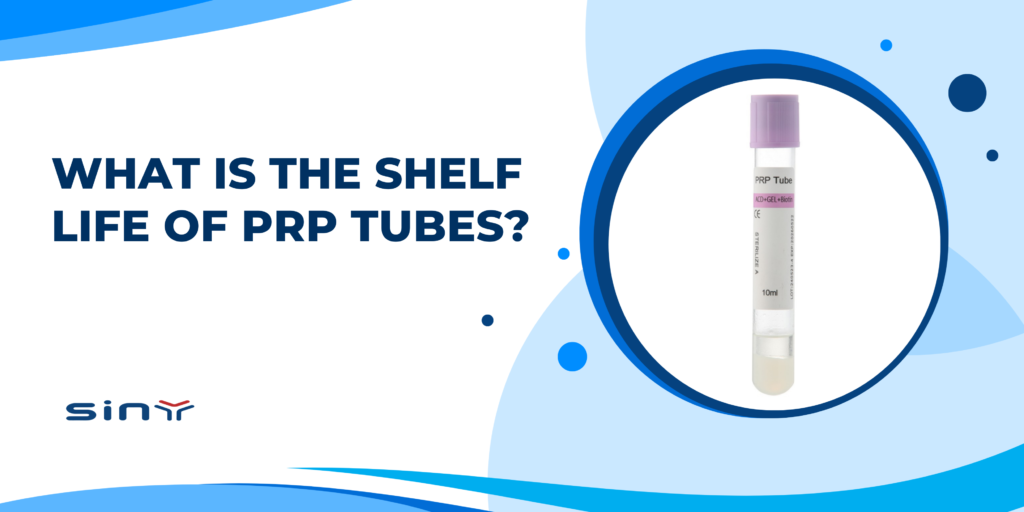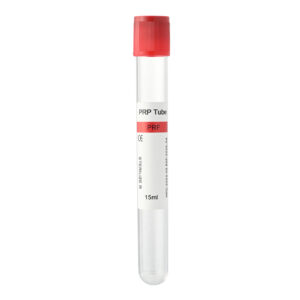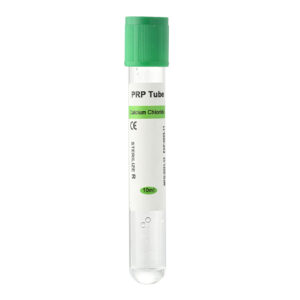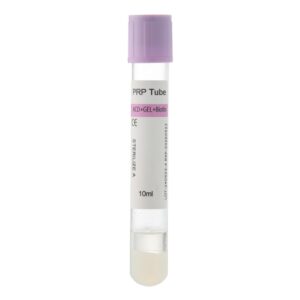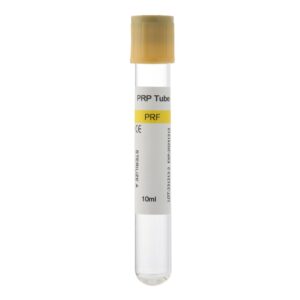When discussing platelet-rich plasma (PRP) therapy, one of the most common questions from clinicians and patients alike is: What is the shelf life of PRP tubes? Since PRP preparation relies heavily on the quality of the collection tube, understanding how long PRP tubes remain effective is essential for ensuring treatment safety and efficacy. In this article, we will explore what PRP tubes are, their different types, how to store them properly, and most importantly, their shelf life and best practices in clinical use.
What Are PRP Tubes?
PRP tubes (Platelet-Rich Plasma Tubes) are specialized vacuum blood collection tubes designed for the preparation of platelet-rich plasma. They are usually preloaded with anticoagulants, separating gels, or activators to ensure quick separation of plasma while maintaining platelet activity. PRP tubes are widely used in dermatology, orthopedics, dentistry, and sports medicine. Compared with regular blood collection tubes, PRP tubes are optimized in formulation and preservation for better clinical outcomes.
Types of PRP Tubes
PRP tubes vary based on additives and intended clinical functions. The main types include:
- Sodium Citrate Tubes: Basic anticoagulant tubes that prevent clotting before centrifugation.
- Gel + Sodium Citrate Tubes: It contains both an anticoagulant and a separating gel, which allows clearer plasma separation and higher purity.
- HA + Sodium Citrate + Gel Tubes: Combined with hyaluronic acid, these are often used in dermatology and joint therapy for both separation and tissue repair purposes.
- ACD Series Tubes
- ACD-A Tubes: Standard formula, widely used for general PRP preparation.
- ACD-B Tubes: Alternative formulation designed for specific clinical applications.
- ACD + Gel Tubes: Provide better plasma separation efficiency.
- ACD + Gel + Biotin Tubes: Enriched with biotin, particularly suitable for hair restoration treatments.
- Sodium Citrate + Gel + Biotin Tubes: Combine anticoagulant, separation gel, and biotin, ideal for hair and skin treatments.
- Biotin Tubes: It contains only biotin, mainly applied in hair regeneration therapy.
- Calcium Chloride Tubes: Used to activate platelets and promote the release of growth factors, commonly applied in regenerative medicine.
- PRF Tubes (Platelet-Rich Fibrin): Unlike PRP tubes, PRF tubes contain no anticoagulants. They utilize low-speed centrifugation to form a fibrin matrix, suitable for dental implants, orthopedic repair, and wound healing.
This wide range of PRP/PRF tubes covers various clinical needs, allowing healthcare providers to select the most appropriate type based on treatment goals.
How to Properly Store PRP Tubes
Since PRP tubes are disposable medical consumables, storage conditions directly affect tube performance and additive stability. General requirements include:
- Store at 4–25°C in a cool, dry environment, away from sunlight and humidity.
- Avoid repeated freezing and thawing, which may reduce the effectiveness.
- Keep tubes in their original packaging to prevent contamination.
- Always check vacuum integrity and expiration date before use.
Shelf Life of PRP Tubes
To maximize the shelf life of PRP tubes, follow these best practices:
- Purchase from Reputable Suppliers: Choose trusted manufacturers like Siny PRP or Siny Medical.
- Rotate Stock: Use older tubes first to avoid expiration.
- Monitor Storage Conditions: Regularly check storage environments to ensure they meet requirements.
Best Practices and Precautions
- Always confirm the tube is within its expiration date before use.
- Use the prepared PRP within 2 hours whenever possible to ensure maximum effectiveness.
- If delayed use is necessary, choose an appropriate storage method and avoid repeated freeze-thaw cycles.
- Note that shelf life may vary slightly across different brands. Always check product labeling.
- Follow strict aseptic techniques during preparation and application to avoid contamination.
FAQs
Q1: Can PRP tubes be used after expiration?
No. Expired tubes may lose vacuum integrity or additive stability, leading to poor separation and safety risks.
Q2: How long can prepared PRP be stored?
Generally, no more than 2 hours at room temperature. Refrigeration or freezing can extend storage, but platelet activity declines over time.
Q3: Why do different manufacturers indicate different shelf lives?
Differences in production methods, additive formulations, and packaging can lead to varying stability results. Manufacturers determine shelf life based on stability testing.
Summary
As a high-value medical consumable, the shelf life of PRP tubes refers not only to the tube’s own expiration date but also to the viability of the PRP prepared inside. For safe and effective clinical use, the best practice is to select tubes from certified manufacturers, use them within their shelf life, and prepare PRP fresh whenever possible. When storage is required, follow the recommended temperature conditions carefully. Proper storage and handling ensure both therapeutic efficacy and patient safety.

